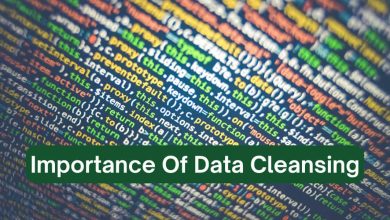How Can I Monitor My Employees’ Access?

What is login/logout monitoring?
Employees’ access monitoring is the automatic, real-time recording of employees’ logon names and login/logout times on their work computers.
Login/logout monitoring is an essential part of the overall process of monitoring employee computers.
Why monitor employee logins and logouts?
When employees log in and out of company computers, it is important to ensure that they are regularly and timely present, working during billable hours and using the computer. The information contained in the Login and Logout Tracking Report allows you to see how employees are working on their computers, how long their computers are idle or active, and if there are any attendance issues.
How can I monitor employee login/logout?
Logging in and out is part of computer usage. Computer monitoring software is the best way to control this process.
Computer monitoring software does this automatically, without manual intervention.
- Computer monitoring software automatically records employee login names and login and logout times.
- Computer monitoring software provides reports showing the login and logout names and times for each employee and each computer.
- The computer monitoring software accurately records sign-in and sign-out times and monitors employee attendance.
- It automatically calculates the number of times an employee is logged in based on the log-in and log-out history.
- If an employee attempts to log in or out of his or her workstation before the end of the workday, the computer monitoring software notifies the employer.
- The computer monitoring software has another feature that tracks active and inactive computer usage time. The reports generated by this feature indicate any discrepancies between logon times and excessive idle time while logged on.
Example of login and logout tracking software
EMS is an excellent example of connection and disconnection tracking software: EMS records the system username, computer name, and the exact date and time of login and logout. In addition to logon and logoff monitoring, the EMS also records active and extended time, productive and non-productive time, software usage, Internet usage (e.g., Facebook usage, website browsing), and other activities that employees perform on their computers. With these features, the company can see when and how employees use their work computers, assess their productivity, and track their attendance. The software provides a number of features needed to monitor employee computers.
Impact of login and logout monitoring on the business
Login and logout monitoring can help businesses improve efficiency and productivity. Here are some of its benefits.
Helps identify attendance issues
The primary benefit of access monitoring is to detect attendance issues and ensure that work hours are not being misused. The reports generated by break and commute time tracking allow managers to assess the actual working time of their employees.
Helps solve attendance problems
Trespass and escape monitors provide employees and managers with real-time reports on the factors that influence attendance. In this way, attendance problems can be resolved or avoided and stronger teams can be built.
Provides real-time analysis
Arrival and departure tracking is automatic and never fails. Hours worked, absences, and overtime can be. Recorded in real-time as employees/users enter and leave the office. Such analysis can help identify patterns and imbalances in work hours.
Monitoring login and logout is part of a larger process
Login and logout monitoring are not usually offered as a separate feature/software. Software that tracks logins and logoffs usually comes with a range of other useful features, such as presence monitoring, Internet monitoring, active/long-term monitoring, and software usage.
This helps to minimize downtime and false overtime
I/O monitoring solves the problem of downtime and overtime. Since it is an automated process, the reports cannot be falsified. It also avoids the problems associated with manual time entry, which range from “buddy punching” (a co-worker fills out a time card or enters hours on behalf of another employee) to falsifying slide cards. In addition, lost time and overtime reports allow you to see how hours are being. Consumed and make adjustments as needed.
Preventing misrepresentation on timesheets
Information from monitoring reports can be very helpful when employees are creating timesheets. Monitoring entries and exits prevent manual entry errors, saving time and money.
Supports flextime systems
Entry/exit monitoring is automated and supports flexible work schedules. Reports are generated continuously and from anywhere. Employers don’t have to worry about who is or isn’t on the schedule, and vice versa. All-time and attendance data is. Collected and understood regardless of the work environment. This helps managers address concerns about whether or not employees are available during working hours.
Helps manage telecommuting employees
Access control ensures full accountability in situations where employees must work remotely or from home. Employees can work efficiently and maintain productivity while away from the office.
Access control increases employees’ sense of accountability for their work and minimizes distractions. In addition, managers can control the workflow of their telecommuting employees.
Provide accurate reporting
Managers can quickly obtain accurate attendance data from each department by accessing access control reports. There is the option of accessing reports at any time and from anywhere. Accurate reports allow managers to assess and develop metrics regarding work hours, workplace culture, and productivity.
About Author
Sarah Noah Liam is a 28-year-old Software Management person who enjoys programming, monitor computer activity, and screen recording. Moreover, she has a post-graduate degree in Computer science.






